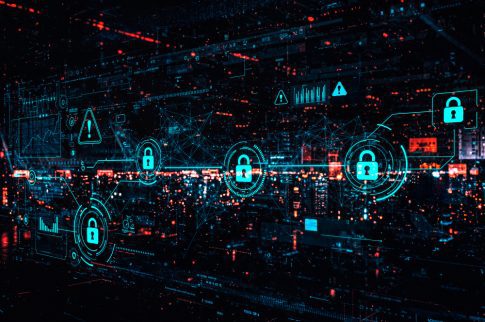The Future Of Durability Lies In The Details You Can’t See

Table Of Contents
So here’s the thing. You wipe your phone, fridge, or car dash… and before you’ve even turned around, fingerprints are back.
Happens every time, right?
It’s small, but man, it adds up. That’s why scientists and product designers keep chasing after these invisible anti-fingerprint coatings.
Invisible surface protection films are the little unseen layers that quietly stop smudges and make stuff look like it hasn’t been through a warzone.
Why We Care About Small Marks
Smudges seem silly until they’re everywhere. On a phone, they mess with visibility, sometimes even the touch feels laggy.
In a kitchen? An expensive fridge suddenly looks like it’s ten years old. And in crowded places—schools, hospitals, offices—dirty surfaces aren’t just ugly, they can be downright gross.
We don’t usually say it, but we all want things that stay clean longer. Low effort, low drama. That’s why there’s suddenly all this noise around durability.
The Appeal Of Invisible Surface Protection
What’s nice is that these coatings don’t look like anything. No bulky case. No “wipe down every hour.” They just sit there, doing the job.
And honestly, the perks are kind of obvious:
- Cleaner: Fewer greasy marks staring at you.
- Less effort: Cleaning goes from daily to “eh, once in a while.”
- Looks newer: The shine really lasts.
- Hygienic: Oils and grime don’t hang around.
Tiny details, but yeah, they make life easier.
Where You’ll See It Most
Odds are you’ve already used something with one of these coatings. A few places:
- Phones: Touchscreens that aren’t total smudge magnets.
- Kitchen appliances: “Smudge-proof” fridges and ovens.
- Cars: Dashboards and touch displays that don’t look wrecked after a week.
- Glasses/lenses: No more constant wiping.
And it’s spreading out. Medical gear, home décor, even random gadgets. You probably won’t notice it—it’s invisible after all.
The Science Behind The Smoothness Of Invisible Surface Protection
Alright, the nerdy bit. Surfaces you think are smooth? Not really.
At the microscopic level, they’re full of grooves where oils love to hide. Coatings fill those gaps, flatten things out, and suddenly, smudges don’t have much to grab onto.
Some coatings hate water (hydrophobic). Others hate oils (oleophobic). Put both together, and yeah, fingerprints basically slide right off.
In some cases, the most common material used to make invisible surface protection is polythene. This acts as the primary raw material. However, in some other cases, where the film needs to be more advanced, it is made up of polyolefins and polyester.
Durability Meets Design
Here’s the kicker: people want stuff that lasts without looking clunky. Nobody wants a laptop wrapped in plastic just to keep it clean. Coatings give you the best of both worlds.
That matte-black laptop? Still looks sharp instead of greasy. Car dashboard? Doesn’t scream “used car lot” after a couple of months. That’s the win—durability without compromise.
More Than Just Aesthetic Value
Looks are only half the story. Real benefits go further:
- Money saved: Fewer sprays and wipes.
- Eco-friendly: Less water, fewer harsh cleaners.
- Better resale: Gadgets and cars that don’t look trashed fetch a higher price.
So yeah, coatings aren’t just “nice to have.” They actually stretch product life and waste less.
Is Invisible Surface Protection Long-Lasting?
The durability of unseen surface protection ranges significantly based on the product category, the protected material, and the way the product is kept. Some coatings may last for many years, whereas others are less resistant and need to be applied more often.
Here are some of the most durable options:
Paint Protection Film (PPF)
- Life expectancy: 5 to 10 years on average, with a few high-quality films going beyond this period.
- Most suitable for: Car paint, smartphones, or any surfaces that are exposed to frequent contact or high-impact areas.
It is a clear, wear-resistant, and flexible thermoplastic urethane film that provides the consumer with protection of the highest degree against scratches, stone chips, and chemical stains.
Additionally, many of today’s self-healing PPFs also come with built-in UV resistance to prevent paint fading.
Nano-Ceramic Coatings
- Life expectancy: A professionally made, high-end, single-layered coating can last for 2 to 5 years or even longer.
- Most suitable for: Car paints, glasses, and ceramics.
The coated surface becomes a semi-permanent bond, where the filler material in the tiny pores makes the surface completely sealed and water-repellent (hydrophobic).
Thus, the surface becomes stain-, chemical-, and UV-resistant.
Industrial-Grade Invisible Shields For Glass
- Life expectancy: 10 to 15 years, especially for exterior architectural glass.
- Most suitable for: Residential and commercial windows, shower doors, and solar panels.
A complete coating of a polymer that is applied professionally, which halts the pores in glass from becoming highly resistant to water, dirt, mineral deposits, and other types of corrosion.
Also, they do not have a limited lifetime, as a new layer can be easily applied on top without taking the original one off.
| Factors That Influence The Longevity Of Invisible Surface Protection • Preparation: The surface must be cleaned properly, and the preparation must be done in the right way. This is very important to the bonding of the coating or the film and to the time they can be used. • Maintenance: Besides the maintenance of the layer’s quality, regular cleaning with non-abrasive products is also important for the hydrophobic properties to be preserved. • Exposure: Those surfaces that are exposed to severe conditions like very hot sun, acidic rain, and frequent abrasion will be degraded quickly. • Type of damage: The means of protection have to match the type of damage that you want to prevent. For example, liquid nano coatings are the most suitable for scratches, while tempered glass is the best for impact protection. |
Future Innovations On The Horizon
And the tech? Just getting started. Picture this:
- Coatings that heal tiny scratches on their own.
- Surfaces that kill bacteria (automatically, not just “easier to clean”).
- Layers that shift properties depending on what’s touching them.
That’s not sci-fi. Labs are already working on it. It could totally reshape healthcare, electronics, and even furniture.
The Beauty Of The Invisible Surface Protection
The funny part is the best stuff, you don’t notice. No flashing lights, no weird texture—just your phone or fridge staying clean. That’s the magic.
Next time you swipe a screen or lean on a kitchen counter, pay attention. Feels better when it doesn’t look like a crime scene of fingerprints, right? Sometimes the things we never see end up making the biggest difference.
Read Also:

























